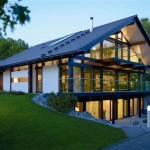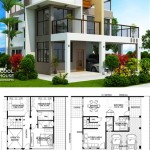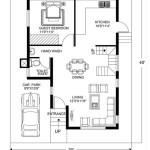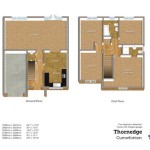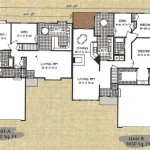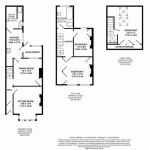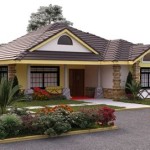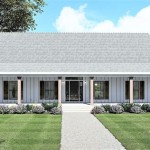Ranch House Floor Plans: A Visual Exploration
Ranch house floor plans, characterized by their single-story design and open layouts, remain a popular choice for homeowners seeking accessibility, functionality, and a connection to the outdoors. These plans, often associated with mid-century architecture, have evolved significantly over time, adapting to contemporary lifestyles and building practices. Examining ranch house floor plan pictures offers valuable insight into the various architectural styles, spatial configurations, and design elements that define this enduring housing type. A comprehensive understanding of these visual representations aids prospective homeowners in identifying the ideal layout to suit their specific needs and preferences.
The appeal of ranch house floor plans lies in their inherent simplicity and adaptability. The single-story design eliminates the need for stairs, making them particularly suitable for individuals with mobility limitations or families with young children. Furthermore, the typically open floor plans promote a sense of spaciousness and facilitate effortless flow between living areas, kitchen, and dining spaces. The prevalence of large windows and sliding glass doors further enhances the connection to the surrounding landscape, a hallmark of ranch-style architecture. Analyzing ranch house floor plan pictures allows one to appreciate the diversity of layouts, ranging from compact designs suitable for smaller lots to sprawling configurations ideal for expansive properties.
Furthermore, ranch house floor plans are inherently cost-effective to build. The absence of multiple stories simplifies the construction process, reducing material costs and labor expenses. The horizontal orientation of the house also facilitates efficient heating and cooling, contributing to long-term energy savings. The ease of expansion is another key advantage, allowing homeowners to add additional rooms or extensions as their needs evolve. By studying ranch house floor plan pictures, individuals can gain a better understanding of the structural elements and space planning considerations involved in designing or remodeling a ranch-style home.
Key Point 1: Variations in Ranch House Styles
Ranch house architecture encompasses a spectrum of styles, each with distinctive characteristics that are reflected in their respective floor plans. The original "California Ranch" style, popularized in the 1930s, typically features an L-shaped or U-shaped layout, with a central courtyard or patio providing an outdoor living space. These plans often prioritize privacy and a seamless integration with the natural environment. The "Suburban Ranch," a common variation from the 1950s and 1960s, tends to be more compact and rectangular in form, often situated on smaller lots. These plans often feature a dedicated living room, dining room, and kitchen, with bedrooms clustered in a separate wing.
The "Split-Level Ranch" introduces a slight vertical element, with different sections of the house located at different elevations. This design can effectively delineate living spaces while maintaining the overall single-story aesthetic. The "Raised Ranch" style elevates the main living area above a partial or full basement, creating additional living space below grade. This design is often favored in areas with sloping terrain or where additional storage is required. Images of these different ranch house styles showcase the diverse approaches to space planning and architectural detailing that can be incorporated into a ranch-style home. Analyzing these images helps prospective homeowners determine which style best aligns with their architectural preferences and lifestyle requirements.
More contemporary interpretations of the ranch house style often incorporate open-concept layouts, emphasizing shared living spaces and a focus on natural light. These plans may feature gourmet kitchens, spa-like bathrooms, and flexible spaces that can be adapted for various uses, such as home offices or entertainment areas. Sustainable design principles, such as passive solar heating and rainwater harvesting, are also increasingly integrated into modern ranch house floor plans. By studying a variety of ranch house floor plan pictures representing different architectural styles and eras, individuals can gain a comprehensive understanding of the evolution of this popular housing type.
Examining the spatial relationships between different rooms within each style is also crucial. The placement of the master bedroom, the proximity of the kitchen to the dining area, and the flow of traffic between different zones can significantly impact the functionality and livability of the house. Visualizing these relationships through floor plan pictures allows prospective homeowners to identify potential advantages and disadvantages of each layout, facilitating informed decision-making during the planning and design process.
Key Point 2: Understanding Space Planning and Room Layouts
Effective space planning is essential for creating a functional and comfortable ranch house floor plan. The layout should optimize the use of available square footage, ensuring that each room is adequately sized and appropriately located. The flow of traffic between different areas of the house should be smooth and intuitive, minimizing congestion and maximizing convenience. Ranch house floor plan pictures provide valuable visual cues for understanding how different rooms can be arranged to achieve these goals.
The kitchen, often considered the heart of the home, requires careful consideration in the floor plan. Open-concept kitchens, popular in contemporary ranch house designs, typically flow seamlessly into the living and dining areas, creating a large, shared space for family gatherings and entertaining. Island kitchens provide additional counter space and seating, while walk-in pantries offer ample storage for food and supplies. The location of the kitchen relative to other areas of the house, such as the garage or the backyard, is also important to consider, as it can impact the convenience of grocery shopping and outdoor grilling.
Bedrooms should be designed to provide privacy and comfort. The master bedroom is often located at the opposite end of the house from the secondary bedrooms, creating a sense of separation and seclusion. En-suite bathrooms and walk-in closets are common features in master suites, providing additional amenities and storage space. The size and layout of the secondary bedrooms should be adequate to accommodate beds, desks, and other furniture. The placement of windows and the orientation of the bedrooms relative to the sun can also impact the comfort and energy efficiency of the rooms.
Living areas, such as living rooms and family rooms, should be designed to accommodate a variety of activities, from relaxing and watching television to entertaining guests. The size and shape of the living area should be appropriate for the intended use, and the furniture should be arranged to create a comfortable and inviting space. Large windows and sliding glass doors can bring natural light into the living area and provide views of the surrounding landscape. Fireplaces can add warmth and ambiance to the space, while built-in shelving can provide storage and display space. The location of the living area relative to other areas of the house, such as the kitchen and the bedrooms, can impact the overall flow and functionality of the floor plan.
Key Point 3: Analyzing Exterior Features and Site Orientation
The exterior features of a ranch house play a significant role in its overall aesthetics and functionality. The roofline, siding materials, window placement, and landscaping all contribute to the curb appeal of the house and its ability to blend in with the surrounding environment. Ranch house floor plan pictures often include exterior elevations, which provide a visual representation of the house from different angles. Studying these elevations can help prospective homeowners to assess the aesthetic appeal of the house and to identify potential areas for improvement.
The orientation of the house on the site is another important consideration. The placement of windows and doors should be carefully planned to maximize natural light and ventilation while minimizing heat gain and glare. In colder climates, orienting the house towards the south can maximize passive solar heating, while in warmer climates, orienting the house towards the north can minimize heat gain. The location of trees and other landscaping elements can also impact the energy efficiency and comfort of the house.
Outdoor living spaces, such as patios and decks, are often integrated into ranch house floor plans. These spaces provide an extension of the indoor living area and can be used for relaxing, entertaining, and enjoying the outdoors. The size and location of the outdoor living space should be appropriate for the intended use, and the materials used should be durable and weather-resistant. The orientation of the outdoor living space relative to the sun and wind can also impact its comfort and usability.
Garages and carports are common features in ranch house designs. The location of the garage or carport relative to the house should be convenient and accessible, and the size should be adequate to accommodate the number of vehicles owned by the household. Attached garages provide direct access to the house, while detached garages offer more privacy and separation. Carports provide shelter from the elements but do not offer the same level of security as garages. Carefully analyzing ranch house floor plan pictures that depict exterior features and site orientation allows homeowners to make informed decisions about design choices.
The overall design of a ranch house floor plan should reflect the needs and preferences of the homeowners. The floor plan should be functional, comfortable, and aesthetically pleasing, and it should be well-suited to the site and surrounding environment. By carefully considering all of these factors, and utilizing visual resources like ranch house floor plan pictures, prospective homeowners can create a ranch-style home that they will enjoy for years to come.

4 Bedroom Classic Ranch House Plan With Covered Porch

Affordable Ranch House Plan 1453

Tierney Ranch House Plans Luxury Floor
Trending Ranch Style House Plans With Open Floor Blog Eplans Com

Ranch House Plans With Open Floor Blog Homeplans Com

House Plan 85004 Quality Plans From Ahmann Design

Open Concept Floor Plan For Ranch With Spacious Interior Home House Plans Traditional Small

House Plan 40112 Quality Plans From Ahmann Design

Ranch Style House Plans Fantastic Small Floor

Open Concept Ranch Home Plan 89845ah Architectural Designs House Plans

